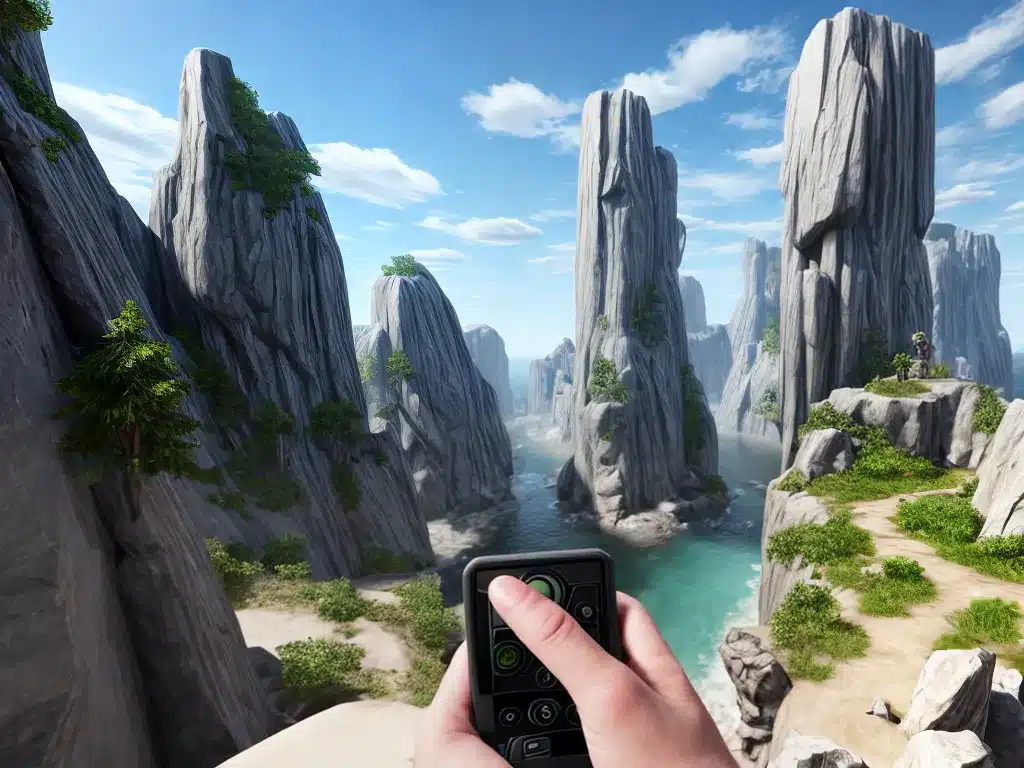Introduction
Creating immersive and realistic virtual worlds has long been a dream for many. With recent advances in computing power, graphics capabilities, VR/AR technologies, and more, we are closer than ever to making incredibly detailed virtual environments. However, there are still significant hurdles to overcome before photorealistic and fully interactive virtual worlds become commonplace. In this article, I dive deep into the current challenges facing the development of HD virtual worlds.
Photorealistic Graphics
One of the biggest aspirations for virtual worlds is providing graphics that are indistinguishable from real life. This is an exceptionally difficult challenge. To achieve photorealism, virtual worlds need:
Extremely Detailed Models and Textures
Every object in a virtual world needs to be modeled and textured with an extraordinary level of detail. The highest quality video game assets today are impressive but still fall short of replicating the intricacies of real-world objects and environments. Advances in scanning technologies can help, but hand-crafting intricately detailed assets remains very labor intensive.
Advanced Shading, Lighting and Physics
Realistic lighting, shading techniques like ray tracing, and physics simulation are also key components. Current real-time rendering capabilities can produce great results, but due to performance limitations often rely on “faking” certain techniques rather than accurately simulating real light behavior. Accurately replicating materials and their physical interactions remains difficult.
Huge Computational Requirements
Even the most powerful hardware today struggles to render highly complex and detailed scenes in real-time. Photorealism requires an enormous amount of computational throughput. We must overcome massive performance and memory bandwidth bottlenecks to make highly detailed scenes render in real-time.
Immersive User Interaction
In addition to visual fidelity, creating an immersive virtual world requires natural and intuitive user interaction. This is another monumental challenge facing simulated environments. Critical capabilities for immersion include:
Precise Tracking and Input
To make a virtual world feel responsive, it needs precise and low-latency tracking of user movements along with natural input mechanisms. Current consumer VR tracking and controllers work pretty well, but still lack the nuance of real world interaction. Fundamental advancements in input devices and tracking will be required.
Realistic Avatars
The avatars that represent users in a virtual world need to look, move, and behave realistically. State-of-the-art avatars can look quite good but rarely move or react as naturally as real people. Simulating realistic biomechanics, gestures, facial expressions, eye movements, and more remains extremely difficult.
Multi-Sensory Engagement
Fully immersive virtual reality should ideally engage all senses, not just visuals and audio. Integrating touch, taste, and smell into virtual experiences is still more conceptual than practical with existing consumer technology. These senses are critical for true immersion.
Scalable Persistent Worlds
For virtual worlds to serve large user populations, they need to be persistently accessible online and scalable. Building living, breathing worlds accessed simultaneously by many users introduces monumental technical obstacles including:
Distributed Simulation
Simulating the activities of potentially millions of simultaneous users distributed around the world requires hugely complex distributed systems and networking capabilities. Keeping shared virtual worlds constantly updating across vast geographic distances is incredibly difficult.
Massive Data Management
The amount of data needed to represent expansive virtual worlds—detailed environments, avatars, objects, etc.—will be enormous. Managing this data and dynamically loading relevant pieces as users access different parts of the world is a massive challenge.
Maintaining Consistency
With many users able to interact and change the virtual world, ensuring that everyone sees a consistent version of the simulation despite their varied locations and connections is incredibly difficult. Keeping everything synchronized across users is massively complex at scale.
Artificial Intelligence
For interactive virtual worlds filled with intelligent NPCs rather than just static environments, we need huge leaps in artificial intelligence capabilities including:
Lifelike Behavior
Creating NPCs that move, behave and react in human-like ways is incredibly challenging. State of the art game AI still acts distinctly robotic with predictable and limited behaviors. Advances in areas like motion planning, group coordination, planning, and learning will be needed.
Natural Language Processing
To make NPCs in virtual worlds truly interactive, we need them to engage in free-flowing conversations with human users. Current natural language capabilities are improving but still far from robust comprehension and generation needed for human-level exchanges.
Reasoning and Memory
For in-depth conversations and believable behavior, NPCs will require generalized reasoning, context tracking, episodic memory, and other high-level cognitive capabilities that artificial intelligence still largely lacks. Reproducing human-level reasoning remains an unsolved challenge.
Ethical Concerns
As virtual worlds become more immersive and filled with intelligent NPCs, important ethical questions arise that developers will need to grapple with:
- How will personal privacy be protected in highly monitored virtual environments?
- Should free speech be protected when NPCs can create harmful content themselves?
- How will realistic violence and crime be handled?
- How can we prevent addiction-like behaviors that deeply immersive worlds may enable?
There are no simple answers to these critical questions. Careful thought and likely regulation will be required as virtual worlds evolve.
The Road Ahead
Despite the monumental challenges involved, I firmly believe incredible HD virtual worlds are on the horizon. With continued exponential progress in computing, graphics, AI, VR/AR, and other key technologies, we will eventually overcome current limitations. How soon remains uncertain, but the rapid pace of innovation gives me confidence that truly immersive and photorealistic virtual environments are achievable in our lifetimes. By understanding today’s challenges, we can more quickly unlock the full potential of virtual worlds and build thriving alternate realities.













